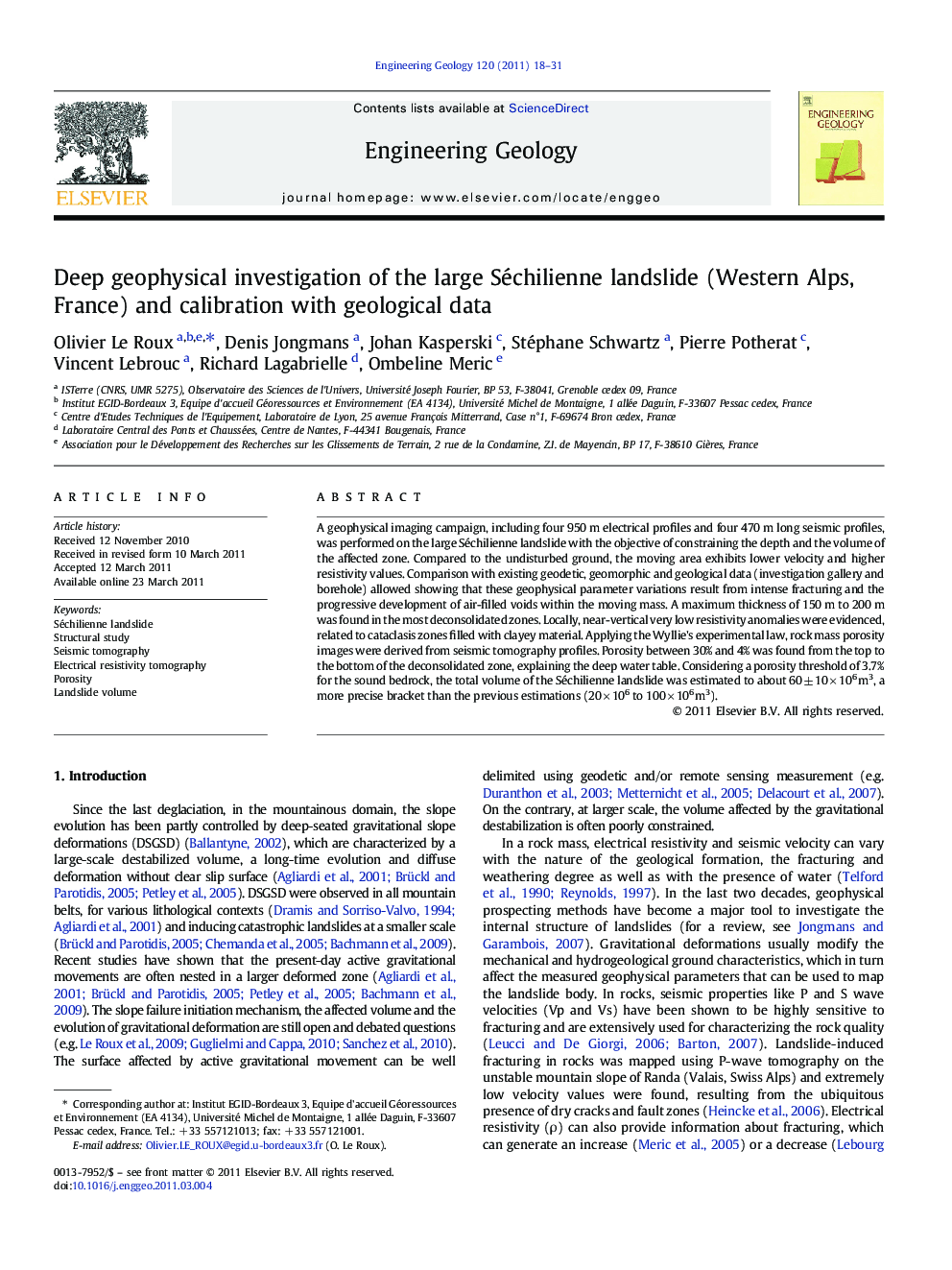| Article ID | Journal | Published Year | Pages | File Type |
|---|---|---|---|---|
| 4744089 | Engineering Geology | 2011 | 14 Pages |
A geophysical imaging campaign, including four 950 m electrical profiles and four 470 m long seismic profiles, was performed on the large Séchilienne landslide with the objective of constraining the depth and the volume of the affected zone. Compared to the undisturbed ground, the moving area exhibits lower velocity and higher resistivity values. Comparison with existing geodetic, geomorphic and geological data (investigation gallery and borehole) allowed showing that these geophysical parameter variations result from intense fracturing and the progressive development of air-filled voids within the moving mass. A maximum thickness of 150 m to 200 m was found in the most deconsolidated zones. Locally, near-vertical very low resistivity anomalies were evidenced, related to cataclasis zones filled with clayey material. Applying the Wyllie's experimental law, rock mass porosity images were derived from seismic tomography profiles. Porosity between 30% and 4% was found from the top to the bottom of the deconsolidated zone, explaining the deep water table. Considering a porosity threshold of 3.7% for the sound bedrock, the total volume of the Séchilienne landslide was estimated to about 60 ± 10 × 106 m3, a more precise bracket than the previous estimations (20 × 106 to 100 × 106 m3).
Research highlights► A geophysical imaging campaign was performed on the large Séchilienne landslide. ► It was calibrated with existing geodetic, geomorphic and geological data. ► Unlike the stable mass, moving areas exhibit low velocities and high resistivities. ► In applying the Wyllie's law, rock mass porosity was derived from seismic velocity. ► The total volume of the Séchilienne landslide was estimated to about 60 ± 10 × 106 m3.
